Welcome to our blog post all about walleye teeth! Have you ever wondered about the remarkable dental features of these elusive fish? Well, you’re in the right place. In this article, we will dive into the fascinating world of walleye teeth, exploring their sharpness, composition, functionality, and more. Discover the truth behind common misconceptions, learn how to handle walleye properly, and gain insights into their toothy characteristics. Whether you’re an angler seeking to enhance your walleye fishing knowledge or simply intrigued by nature’s dental wonders, join us as we unravel the secrets of walleye teeth. Let’s jump in!
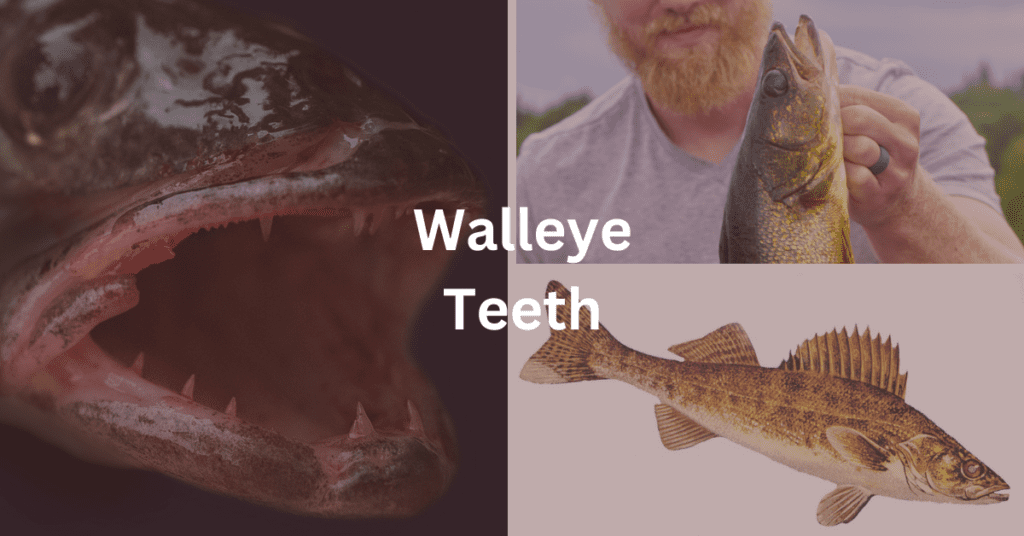
Do Walleye Have Teeth?
Yes, walleye have teeth. Their teeth play an essential role in capturing and consuming their prey. Walleye possess sharp, strong canines located in their lower jaw. These canines are conical and pointed, allowing for effective predation. In addition to the canines, walleye have teeth on various parts of their mouth anatomy.
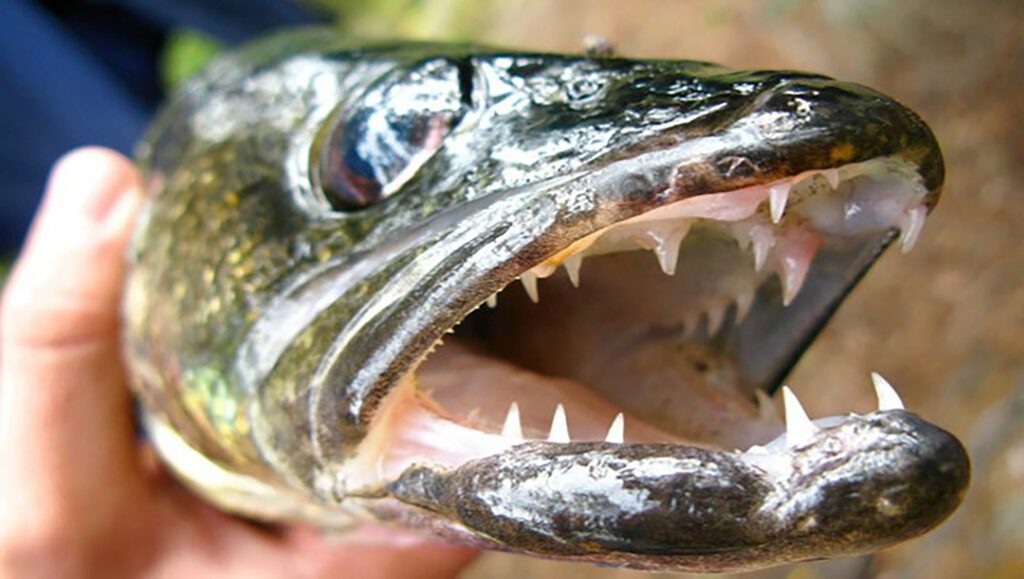
The maxillaries, which are the upper jawbones, house teeth that assist in grasping and holding onto prey. The premaxillaries, which are located in the front of the upper jaw, also contribute to the walleye’s dental structure. The jaws, as a whole, provide support and stability for the teeth, enabling them to effectively capture and process their food.
Furthermore, the head of the vomer, a small bone situated in the roof of the mouth, and the palatines, bones along the sides of the upper jaw, also house teeth in walleye. These additional dental structures further enhance their ability to catch and consume their prey.
How Big Are Walleye Teeth?
Walleye teeth come in a range of sizes, with their dimensions varying depending on the specific tooth type. Typically, walleye teeth can be categorized into two main groups: the canines and the other teeth located on different parts of their mouth.
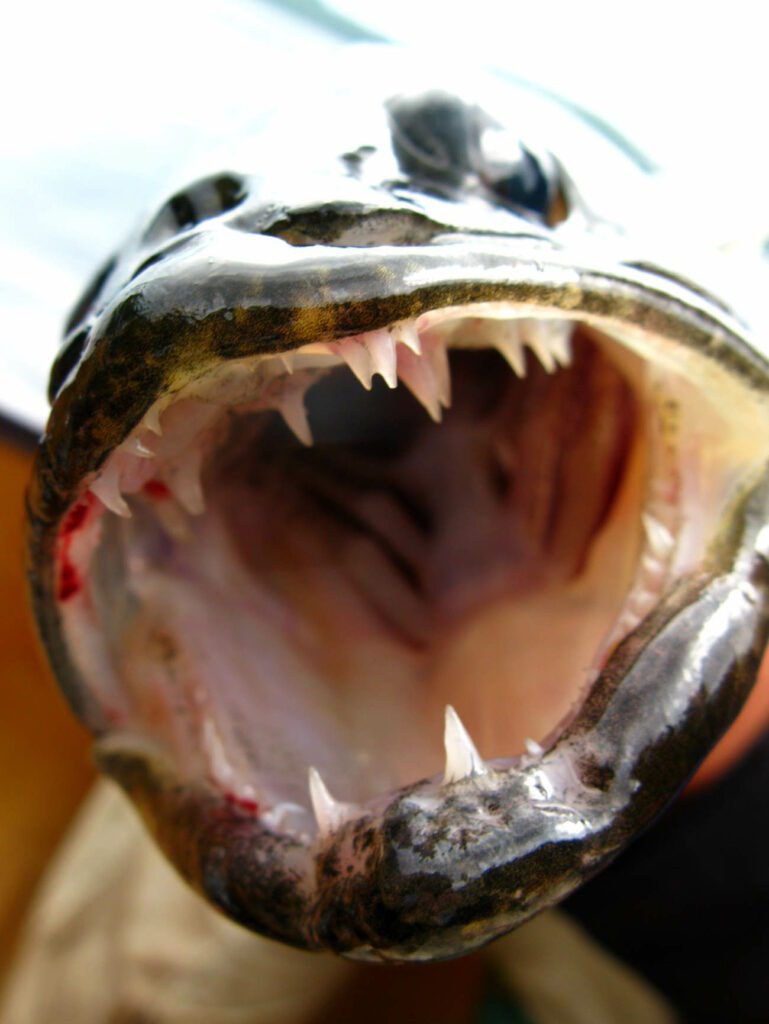
When it comes to the size of walleye canines, they can range from less than 1/16th of an inch to up to a half an inch. These canines are the prominent, conical, and pointed teeth found in the lower jaw. Their size allows walleye to effectively grasp and puncture their prey during hunting.
In contrast, the size of the other teeth found on the maxillaries, premaxillaries, jaws, head of the vomer, and palatines is typically smaller compared to the canines. These teeth contribute to the overall dental structure of the walleye and aid in manipulating and processing food before swallowing.
The varying sizes of walleye teeth reflect the adaptation of this species to its predatory nature. The larger canines provide the necessary strength and piercing ability, while the smaller teeth on other parts of the mouth assist in securing and processing prey.
What Are Walleye Teeth Made Of?
Walleye teeth are composed of two primary components: dentine and enamel. Similar to our own teeth, these structures provide strength, protection, and sensory functions for the walleye’s oral anatomy.
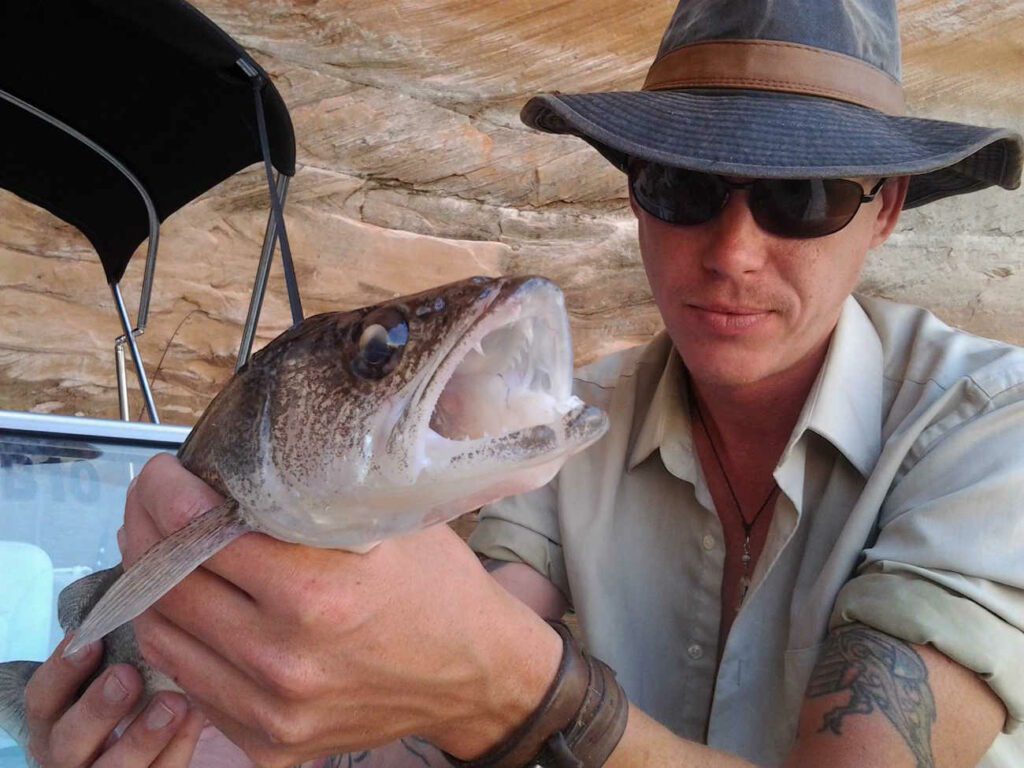
Dentine forms the main bulk of walleye teeth. It is a bone-like substance that surrounds the pulp cavity, which contains blood vessels and nerves. Dentine is durable and resilient, giving the teeth the necessary structural integrity to withstand the forces exerted during feeding and prey capture.
Enamel, on the other hand, covers the outer surface of the walleye’s teeth. It is the hardest substance in the body and acts as a protective layer, shielding the underlying dentine from wear and tear. Enamel is highly mineralized and provides an extra layer of defense against abrasion and external forces.
Within the pulp cavity, blood vessels nourish the tooth and provide essential nutrients for its growth and maintenance. These blood vessels play a vital role in supplying oxygen and nutrients while removing waste products from the tooth’s cells.
Nerves, also found within the pulp cavity, are responsible for providing sensation to the tooth. They transmit signals and sensory information, allowing the walleye to perceive touch, pressure, and pain related to its teeth.
How Many Teeth Do Walleye Have?
The number of teeth a walleye possesses can vary, but on average, they have somewhere between 30 and 50 teeth. However, it’s important to note that individual variation exists, and some walleye may have slightly more or fewer teeth.

The arrangement of teeth in a walleye’s mouth follows a specific pattern. They typically have a set of sharp canines in the lower jaw, which are crucial for grasping and puncturing prey. Additionally, teeth can be found on the upper jaw, specifically on the maxillaries, premaxillaries, head of the vomer, and palatines. These teeth aid in securing, manipulating, and processing food before ingestion.
The number of teeth in walleye, though not fixed, is generally consistent with their predatory lifestyle. Having multiple teeth allows them to effectively capture, hold, and consume a variety of prey items. The variation in tooth number among individuals could be attributed to factors such as genetic variation or individual differences in diet and feeding behavior.
What Kind of Teeth Do Walleye Have?
Walleye have a distinctive set of teeth that suit their predatory nature. Their dental structure consists of different types of teeth, each serving specific functions during hunting and feeding.
One notable type of tooth found in walleye is their sharp canines, which are located in the lower jaw. These canines are conical and pointed, resembling fangs. The canines are particularly strong and enable the walleye to grasp and puncture their prey effectively. Their curved shape aids in securing the prey, preventing escape.
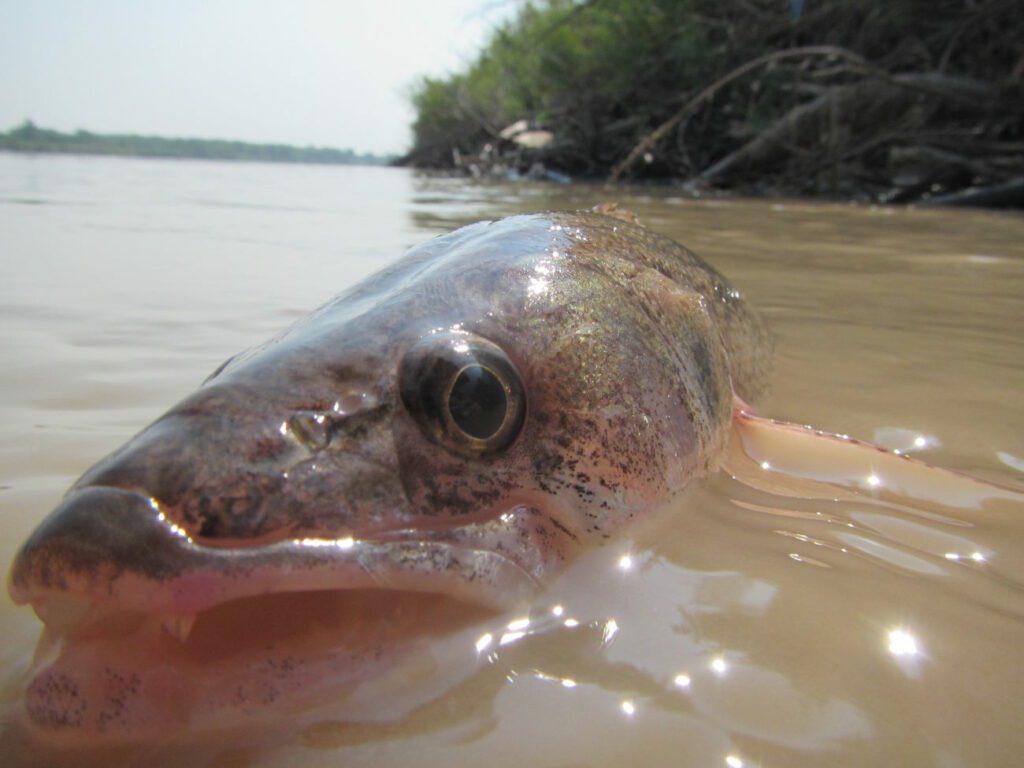
In addition to the canines, walleye possess other types of teeth throughout their mouth. These teeth are found on various parts of their oral anatomy, including the upper jaw. The maxillaries, premaxillaries, head of the vomer, and palatines all contribute to the walleye’s dental composition.
While the canines are the most prominent teeth, the other teeth serve important functions as well. They assist in grasping and manipulating prey, allowing the walleye to maintain control during feeding. These teeth, while not as sharp or pointed as the canines, contribute to the overall efficiency of the walleye’s feeding strategy.
The combination of canines and other teeth in the walleye’s mouth enables them to successfully capture, hold, and consume their prey. The different types of teeth work in tandem to secure, manipulate, and process food before ingestion.
How Walleye Use Their Teeth
Walleye rely on their teeth to fulfill a crucial role in their feeding behavior and overall survival. These specialized dental structures enable them to effectively capture, manipulate, and consume their prey.
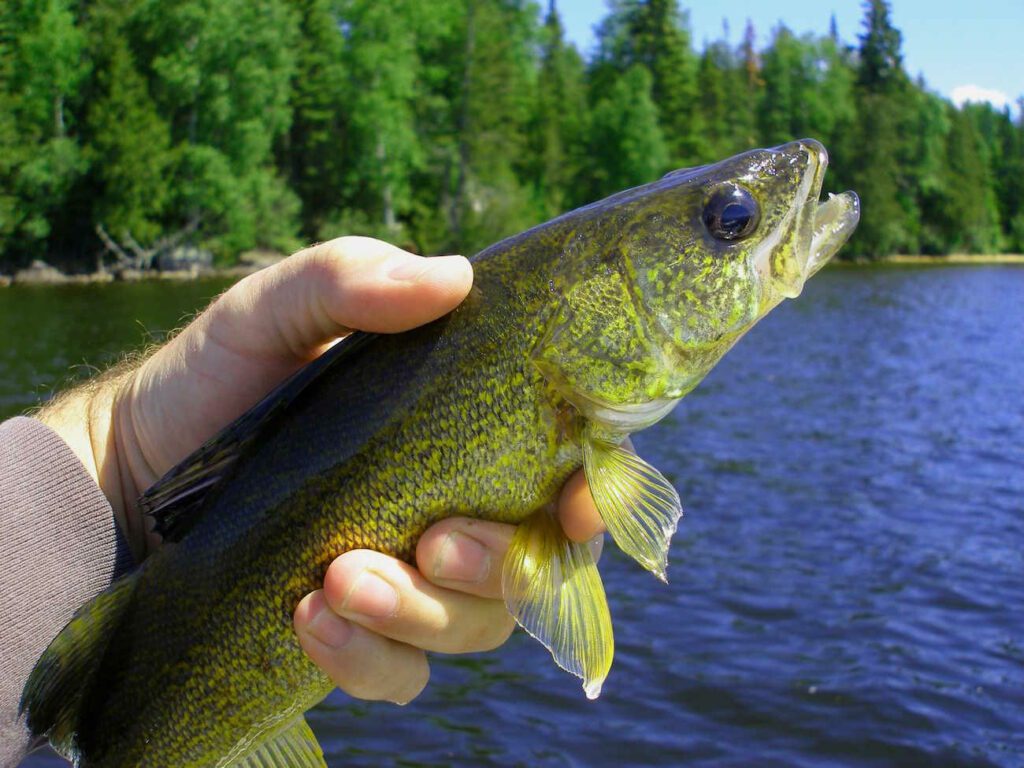
The sharp canines located in the lower jaw play a significant role in the walleye’s predatory strategy. These teeth are instrumental in grasping and puncturing prey, providing the necessary grip to prevent escape. With their conical and pointed shape, the canines allow walleye to seize their prey firmly, ensuring a successful capture.
Once the prey is secured, the walleye’s other teeth come into play. These teeth, found on the upper jaw, including the maxillaries, premaxillaries, head of the vomer, and palatines, assist in manipulating and processing the food. They aid in holding and maneuvering the prey, allowing the walleye to position it for effective consumption.
The teeth also serve as a tool for breaking down larger food items. Walleye have a tendency to feed on a variety of prey, ranging from smaller fish to insects and crustaceans. The teeth help them tear and shred the prey into more manageable pieces, facilitating ingestion and digestion.
Furthermore, the sensory function of walleye teeth should not be overlooked. Nerves present in the tooth pulp cavity allow the walleye to detect and perceive important tactile information. This sensory input helps the fish determine the size, shape, and texture of their prey, aiding in efficient capture and feeding.
Are Walleye Teeth Sharp Enough to Injure?
Walleye teeth possess a formidable sharpness that makes them capable of causing injury. While their teeth are not designed to harm humans intentionally, accidental encounters can result in painful bites.
The sharp canines in the lower jaw of a walleye are particularly effective for grasping and puncturing prey. These teeth, with their conical and pointed shape, allow walleye to firmly hold onto their prey, preventing escape. Although they primarily target smaller fish, insects, and crustaceans, if a hand or finger comes into contact with the walleye’s mouth, it can potentially lead to a painful bite.
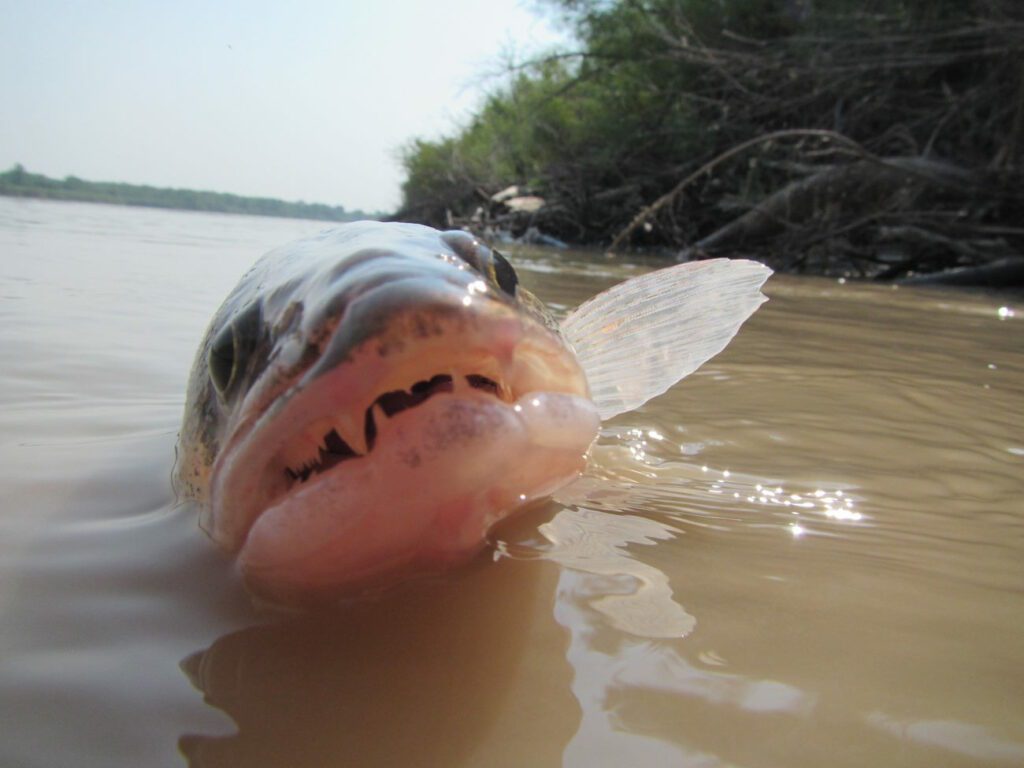
It’s important to exercise caution and handle walleye with care to avoid accidental injuries. When unhooking a caught walleye or handling them for any reason, it’s advisable to use appropriate tools, such as long-nose pliers, to minimize the risk of coming into direct contact with their teeth. Additionally, wearing protective gloves can provide an extra layer of safety.
While walleye teeth are sharp and have the potential to cause injury, it’s worth noting that they generally pose minimal danger to humans when handled with care and respect. Understanding their predatory nature and taking precautions can help ensure a safe and enjoyable experience when interacting with these remarkable fish.
Can Walleye Teeth Cut Line?
Unlike the teeth of their close relatives, such as pike, walleye teeth are not designed for slicing or cutting. Instead, their teeth are specifically adapted for puncturing and grasping prey. As a result, walleye teeth are less likely to cut through fishing line, making the use of a steel leader unnecessary.
Due to their line-shy nature, walleye are known for being more cautious and sensitive to fishing gear. The presence of a steel leader can potentially deter bites from these wary fish, as it may appear unnatural and cause suspicion. In some cases, using a steel leader can lead to fewer walleye being caught.
However, there are alternative options to protect against occasional lure loss while targeting walleye. One effective choice is to use a fluorocarbon leader. Fluorocarbon is nearly invisible underwater and offers good abrasion resistance, providing a suitable compromise between protection and maintaining the natural presentation of the bait or lure.
Using a fluorocarbon leader can offer added assurance against potential lure loss due to the walleye’s teeth, while still maintaining a stealthy approach. This approach allows anglers to capitalize on the walleye’s feeding behavior while reducing the risk of line breakage.
Can Walleye Bite You?
Walleye are generally not aggressive towards humans and are unlikely to bite you, particularly in situations like swimming where there is no provocation. These fish do not perceive humans as prey and do not exhibit aggressive behaviors towards swimmers or divers.
However, it is important to exercise caution when handling walleye. While they are not aggressive towards humans, injuries can occur if they are mishandled or if improper techniques are used during activities such as unhooking or handling. As mentioned earlier, walleye possess sharp teeth, particularly their canines, which are designed for grasping and puncturing prey. Accidental contact with their teeth can result in painful bites.
To minimize the risk of injury when handling walleye, it is recommended to use appropriate tools such as long-nose pliers to safely unhook them. It is also advisable to wear protective gloves to provide an extra layer of protection.
By handling walleye with care and following proper techniques, the likelihood of sustaining injuries from their teeth can be significantly reduced. Respecting these fish and taking precautions ensures a safe and enjoyable experience for both the angler and the fish.
How To Handle a Walleye Properly

Properly holding a walleye is not only important for your safety but also for the well-being of the fish. By following these guidelines, you can ensure a secure grip while minimizing stress and potential harm to the fish.
- Wet your hands: Before handling a walleye, wet your hands to minimize the removal of the fish’s protective slime coating. This coating helps protect the fish from infections and maintains its overall health.
- Support the body: When lifting a walleye, it is crucial to provide proper support to its body. Place one hand underneath the fish’s belly, supporting its weight. Avoid squeezing or putting excessive pressure on the fish.
- Avoid the gills and eyes: Take care to avoid touching the gills or eyes of the walleye. These areas are sensitive and can be easily injured. By keeping your hands clear of these delicate areas, you can prevent unnecessary harm to the fish.
- Mind the teeth: Remember that walleye have sharp teeth, particularly their canines, which are designed for grasping prey. To protect yourself from potential bites, use long-nose pliers or a gripper tool to handle the fish or wear protective gloves. Avoid putting your fingers near the fish’s mouth to minimize the risk of accidental injuries.
- Minimize air exposure: Limit the amount of time the walleye is out of the water to prevent unnecessary stress and potential harm. When taking photos, have the camera ready beforehand and return the fish to the water promptly after capturing the moment.
By following these guidelines, you can handle a walleye properly, ensuring both your safety and the well-being of the fish. Remember to handle the fish with care and respect, maintaining their natural protective coatings and minimizing stress during the process.
Do Walleye Lose Their Teeth?
Walleye, like many other fish species with teeth, go through a continuous process of tooth replacement. Contrary to the old fishing excuse of “they’re losing their teeth right now,” walleye losing their teeth is a normal and ongoing occurrence rather than a temporary phenomenon that affects their feeding behavior.
Unlike humans, who have permanent teeth, walleye and other fish species have a unique dental structure that allows for the constant cycling of teeth. As their teeth wear down or become damaged, new ones grow in to replace them. This process ensures that the walleye’s teeth remain functional for capturing and consuming their prey effectively.
The notion that walleye are “losing their teeth” at a specific time or season is largely unfounded. Walleye undergo a continual cycle of tooth replacement throughout their lives, ensuring that they maintain a functional set of teeth.
It is worth noting that the growth and replacement of teeth in walleye, as with any fish, occur gradually and may not be visibly noticeable. This ongoing process allows them to adapt and maintain their feeding capabilities as their teeth naturally wear down.
Frequently Asked Questions
While walleye teeth are sharp, they are not aggressive towards humans. However, mishandling them can result in painful bites. It’s important to handle walleye with care and use proper techniques to minimize the risk of injury.
Unlike pike, walleye teeth are not meant for cutting and slicing. Using a steel leader can deter bites from line-shy walleye. Instead, consider using a fluorocarbon leader, which provides good lure protection while maintaining a more natural presentation.
Walleye are not aggressive towards humans and are unlikely to bite when swimming. However, injuries from walleye teeth can occur when handling them improperly. Always exercise caution and use proper handling techniques to avoid accidental injuries.
Summary: Walleye Teeth
- Walleye have sharp canines in the lower jaw and strong teeth on the upper jaw.
- Walleye teeth are made of dentine covered with enamel and have a pulp cavity containing blood vessels and nerves.
- The number of walleye teeth can vary but generally ranges from 30 to 50.
- Walleye use their teeth for capturing, manipulating, and processing prey.
- Walleye teeth are not designed to cut line, unlike pike teeth.
- Walleye are unlikely to bite humans, but injuries can occur when mishandling them.
- Properly handling a walleye involves wetting hands, supporting the body, avoiding gills and eyes, and being cautious of teeth.
- Walleye constantly replace their teeth and do not have permanent teeth like humans.
